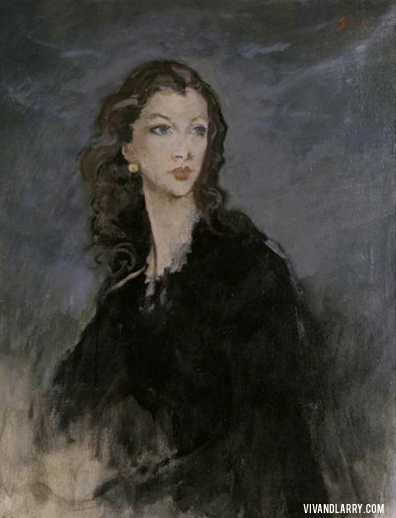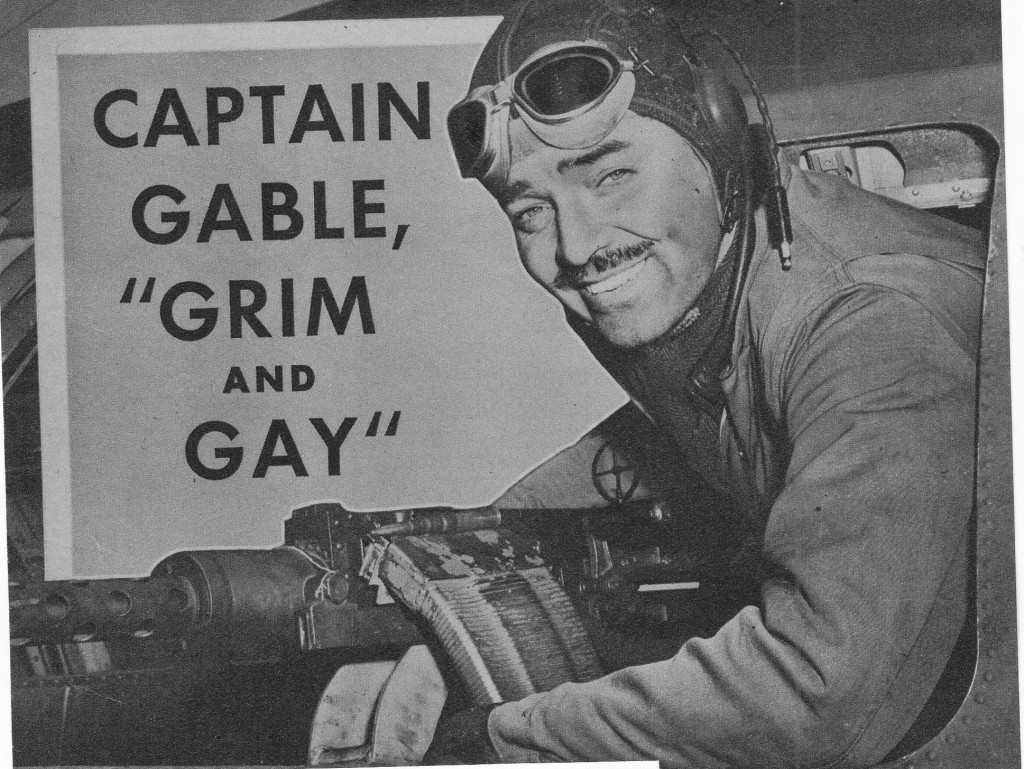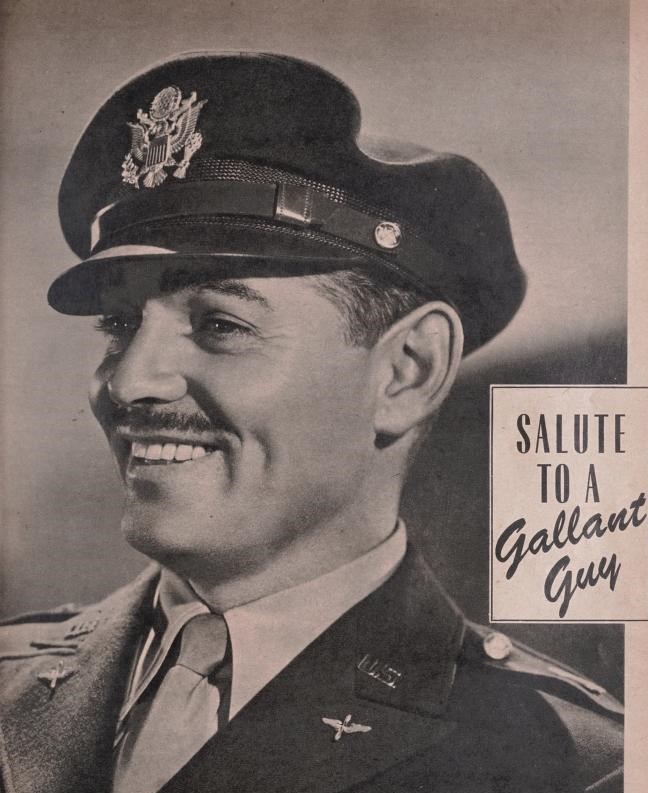{New Article} 1943: Captain Gable, Grim and Gay
I have so many WWII-era articles to upload it will probably take me until I am old and gray to get them all up on the site. Let’s hope not. For now, here’s a new one from 1943, about Clark when he was stationed in London.
“It’s a grand job,” he pronounced, “I’m proud to be helping with it.”
He said it with quiet sincerity that needed no emphasis, for the long unpublicized trip that brought him across the Atlantic was his own choice, just as he originally decided to give up the second highest screen salary in America in order to become Captain Gable of the U.S. Army Air Corps, gunnery instructor on a heavy bomber station and merely “one of the boys” there.
Long after the war was over Clark declared that his time serving his country was the “only decent I thing I’ve ever done.” He liked nothing more than being “one of the boys” instead of the “glamorous” movie star.
One hot day Captain Clark Gable did see a movie, “Casablanca,” at the Regal Theater. Then with a couple of officer friends, he walked across Mayfair to dinner at a restaurant which has become exceedingly popular with U.S. personnel, probably because they like its gracious paneled walls and soft green carpets and courteous elderly waiters and general atmosphere of quiet distinction. They had soup and roast pork, with fried potatoes and cauliflower, and then it was pointed out to them that they had reached the five shilling limit laid down under food laws so they had to do without dessert.
A world that operated with food rations seems so far away, doesn’t it? I love reading about movies Clark saw at the theater. He didn’t like to go often. Wonder what he thought of Casablanca?
Every morning he finds time to read “Stars & Stripes,” the U.S. Army newspaper in England, so he knows something of what film folks are doing both in London and at home. I talked to him about Burgess Meredith and Gene Raymond, both over here wearing khaki like himself, and then we discussed “The Shipbuilders,” a new British movie in which Clive Brook and Margot Grahame are playing, and Clark laughed understandingly when I told him how Vivien Leigh, posing in a classic white chiffon gown for her portrait by famous Augustus John, complained it made her feel like Scarlett O’Hara as an angel!
When conversation passed to Laurence Olivier, producing and directing “Henry V,” with all Shakespeare’s peerless prose so faithfully reproducing the Battle of Agincourt, Clark’s eyes gleamed with a sudden new light. “That’s what I mean to do after the war,” he said. “It’s the man back of the cameras who makes the film—I’ve learned that these last few weeks.”
Clark mentioned a yearn to direct for many years, especially after Carole died, when he grew restless with his career. He never did get around to directing and his first and only furough into producing, The King and Four Queens, was a flop.It is not common to find Clark discussing Vivien Leigh after Gone with the Wind was completed and also I don’t think I have ever heard of him and Laurence Olivier in the same sentence. Kendra of vivandlarry.com agreed with me that it was a quite unusual passage. I inquired about the portrait of Vivien the article mentions and it is the one pictured below (photo courtesy of vivandlarry.com). Kendra says the author must have been wrong, since obviously this dress is black, not white chiffon!

Read the article in its entirety in The Article Archive.

